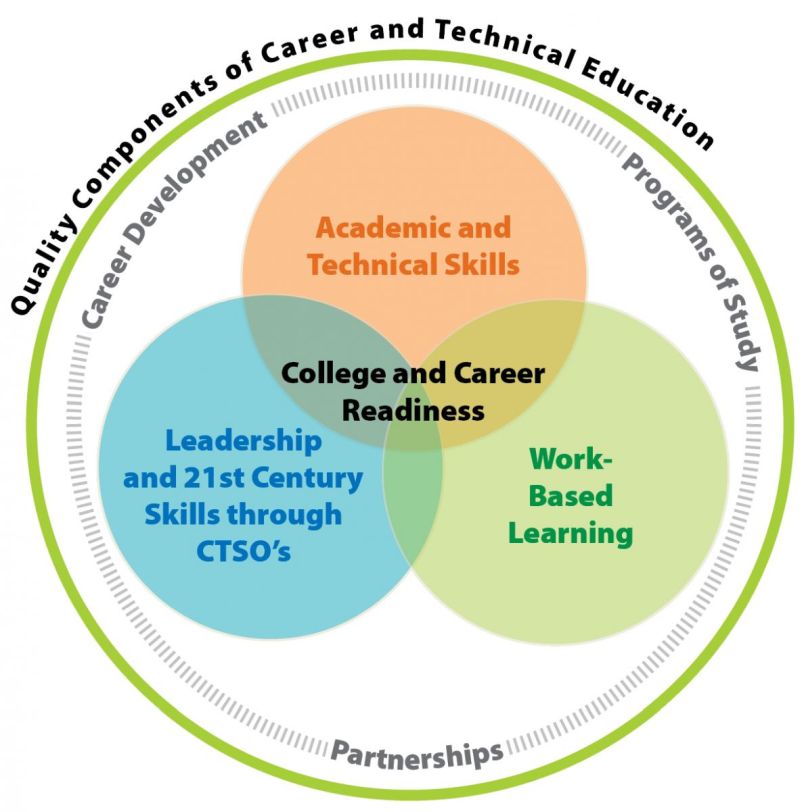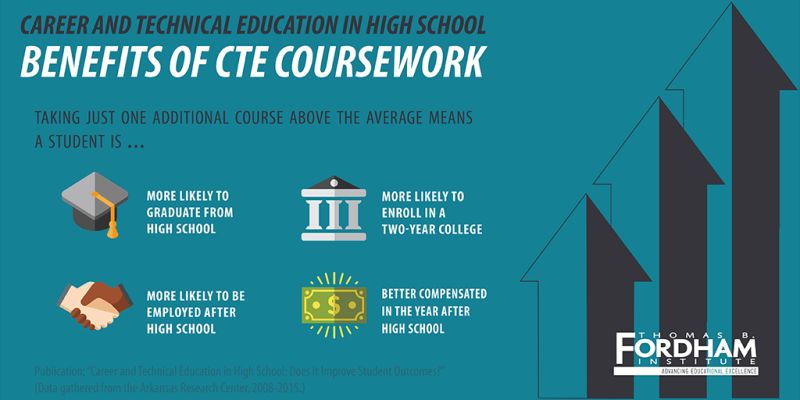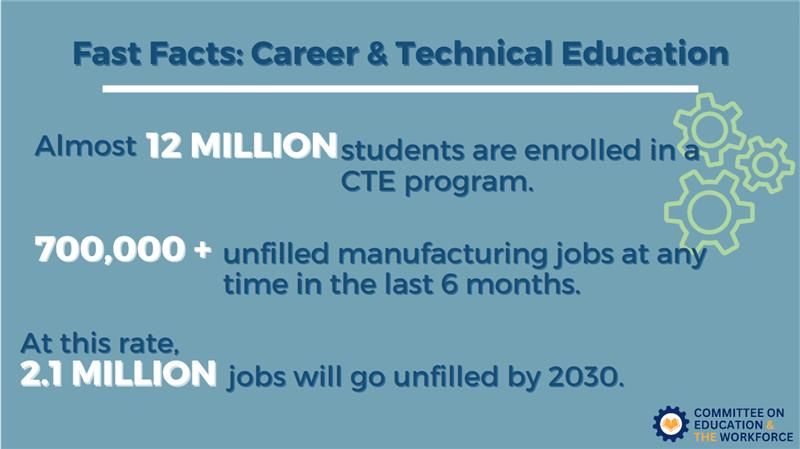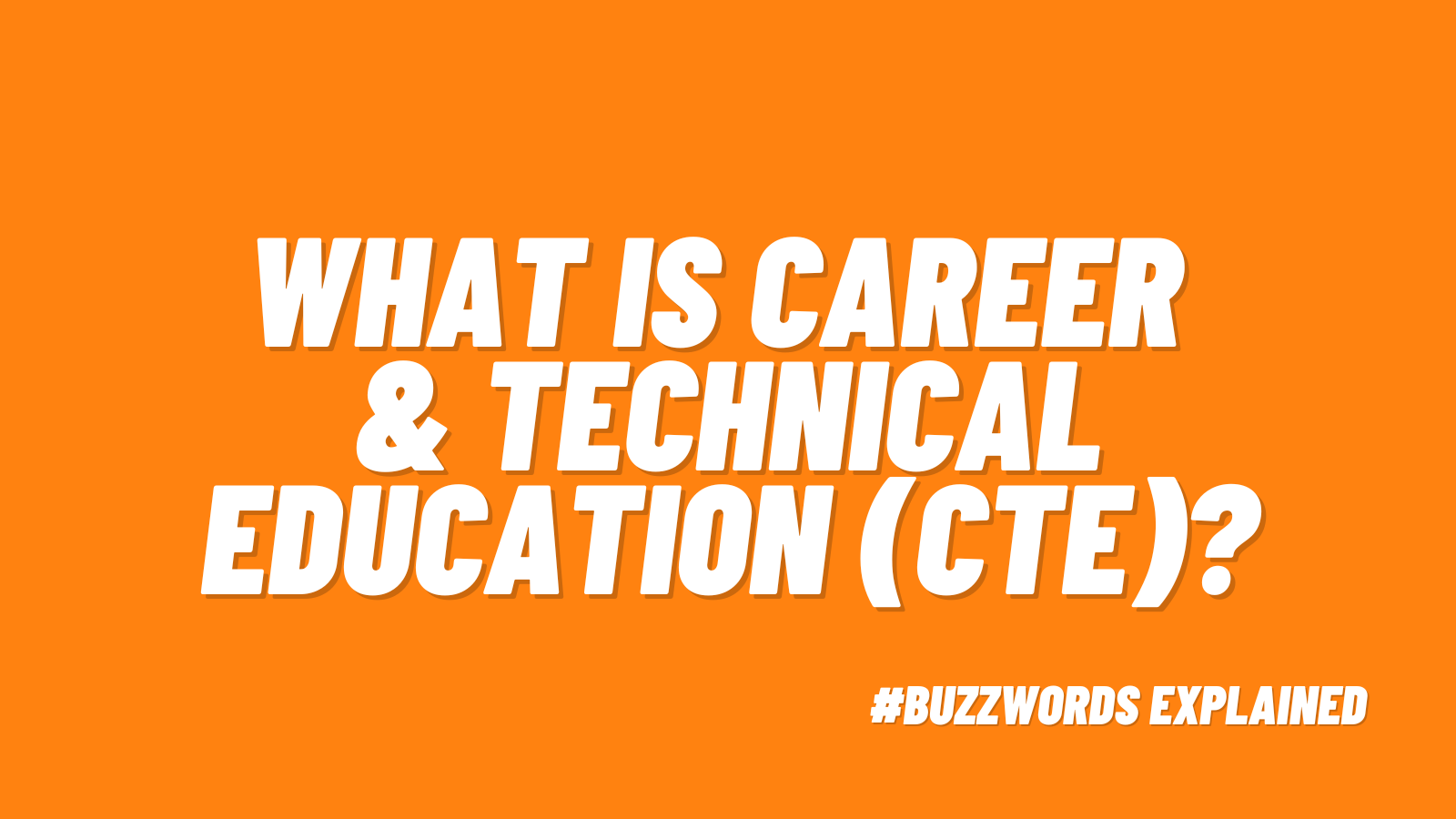A college education is an admirable goal, and it’s a must-have for certain careers these days. But there are plenty of terrific skilled jobs that don’t require a four-year degree, and it’s important to provide today’s students with multiple options so they can find the right fit. For many, that includes career and technical education (CTE). Here’s what that term means, and why it’s such an important option.
What is career and technical education (CTE)?

Simply put, career and technical education (CTE) provides students with the specific training and skills they need for a wide variety of careers that don’t require a traditional college degree. These include skilled trades jobs, health and medical technicians, service and hospitality industries, and more. CTE can begin as early as middle school and continue through high school into post-secondary education.
Unlike a traditional college education, which focuses more on knowledge and theory, CTE aims to help students develop practical skills. It includes much more hands-on experience, both in the classroom and out. Students may earn certifications they need to qualify for jobs, while building a background of experience that will help them get hired.
The length of a CTE course varies, but it is usually much less than a four-year college degree. The costs are also usually far lower, meaning students are ready to enter the workforce sooner and with less potential debt. Depending on the field and their location, students may even be able to receive career and technical education for free as part of their K-12 public school education.
Find out more about career and technical education from Advance CTE.
CTE Fields
The National Career Clusters Framework organizes CTE fields in 16 clusters covering nearly 80 different careers:
- Agriculture, Food & Natural Resources
- Architecture & Construction
- Arts, A/V Technology & Communications
- Business Management & Administration
- Education & Training
- Finance
- Government & Public Administration
- Health Science
- Hospitality & Tourism
- Human Services
- Information Technology
- Law, Public Safety, Corrections & Security
- Manufacturing
- Marketing
- Science, Technology, Engineering & Mathematics
- Transportation, Distribution & Logistics
See the careers included in each CTE cluster here.
Why is CTE important?

In the past, people learned trade skills on the job in apprenticeships or other training programs while also getting paid. Today, those programs aren’t as readily available. Instead, organizations expect new employees to earn their own basic skill training and experience before they’re hired. Students who participate in CTE are ready to take on skilled jobs across a wide array of fields.
Over the last several decades, K-12 schools have placed increasing emphasis on preparing students for higher education such as four-year colleges. While education is always beneficial, it’s important to remember that not every student needs, wants, or can afford to go the traditional college route. Skilled trades jobs are excellent alternatives to that path, with a much smaller investment of time and money required to prepare for them.
Today’s K-12 students have a lot of misconceptions about CTE and skilled trades careers. They may have been taught to value so-called white-collar jobs over blue-collar careers, believing the white-collar jobs to be better paid, in higher demand, or more respected. The truth is that over half of skilled trades jobs start at around $50K per year. And in 2021, only 44% of jobs required a four-year college degree. It’s vital that we encourage students to reconsider their opinions about skilled trades as they make choices about their own career paths.
Learn more about the importance of CTE here.
Who is CTE right for?
Career and technical education can be a smart choice for many students. Those who might be especially interested include students who:
- Prefer or need to enter the full-time workforce sooner after high school
- Don’t enjoy or thrive in traditional classroom subjects or learning experiences
- Have a special interest in a particular CTE cluster or career
- Do better with practical, hands-on skills than theoretical knowledge
- Show an aptitude for a specific skill or trade
- Want to get started in a career while working toward a college degree over time
What does career and technical education look like?

CTE is a huge field, encompassing everything from public school classes and courses to post-secondary technical schools and institutions. Some CTE involves a more traditional classroom structure, with lectures, reading, and exams. But most of it tends to be hands-on, in both practice and live environments. Here’s an overview of what CTE might look like at various levels.
Middle and High School CTE
Every state in the United States has its own career and technical education programs. They’re all aimed at career awareness and readiness, giving students both technical and soft skills that will help them succeed in their future jobs. CTE at the middle and high school levels includes:
- School courses: Students may enroll in classes like accounting, business education, bookkeeping, computer programming, and more as part of their traditional school education. These practical classes provide them with useful skills they can use in the future.
- Vocational/CTE high schools: Students who wish to focus their secondary education on specific career and technical skills may enroll in special schools geared to do just that. These might be set up by the state, county, or local school districts. They could also be charter or private schools. Either way, these schools provide an excellent pathway to earning a high school diploma while preparing to enter the workforce sooner. These students can also choose to enroll in college after graduation; 28% of CTE concentrators in high school later earn a four-year degree.
Learn about public school CTE programs and schools in your state here.
Post-Secondary Trade, Vocational, and Technical Schools
Whether or not students participate in career and technical education in high school, they may choose to enroll in post-secondary CTE schools after graduation. These technical institutions are usually not free, though financial aid may be available. Their courses are shorter than traditional colleges (usually 6-18 months), and the costs are lower too. Students may attend these schools full-time or take courses part-time while also working to pay their expenses.
Also called career colleges or technical institutes, trade and vocational schools offer courses in specific technical skills students need in their careers, such as welding, auto mechanics, carpentry, HVAC repair, health and beauty services, and so on. These courses can last weeks or months, depending on the school and area of study.
Students can take individual classes or courses, or pursue a longer program in subjects like health-care tech, service and hospitality, business administration, legal services, and more. These schools often prepare students to take certification or licensing exams too.
Choosing a good CTE school is important, since it involves an investment of time and money. Do your research to ensure the school is accredited or licensed and has a history of helping graduates find good jobs. The FTC has good advice on choosing a vocational school or certification program here.
Apprenticeships
Some employers and trade unions still offer apprenticeship programs. In an apprenticeship, a person is paid to work and learn at the same time. The take-home pay is usually lower, as part of the compensation is the education received. As students complete various levels of their training and education, their salary increases. Apprenticeships are most common in skilled manual trades like HVAC, carpentry, and welding. Find out more about apprenticeship programs here.
What are your thoughts on the importance of career and technical education? Join the conversation in the We Are Teachers HELPLINE group on Facebook.
Plus, 30 Awesome Career-Readiness Activities That Teach Soft Skills.


